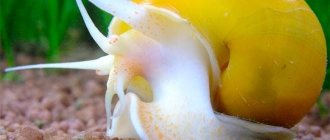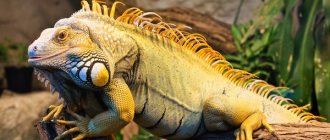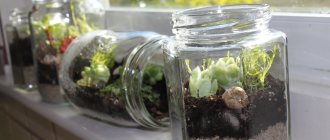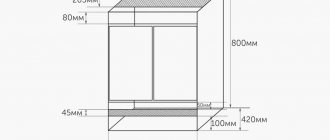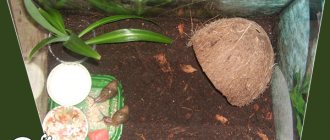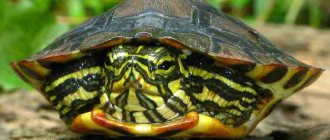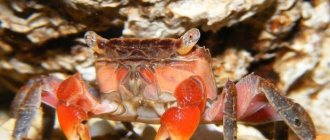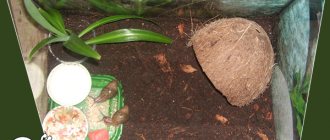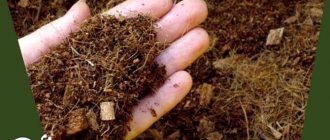Recently, more and more people are giving preference to iguanas: they do not cause allergies, have virtually no odor, no fluff or fur flies around the apartment, and such a pet is exotic and speaks in favor of the originality of the owner. At home, reptiles can live about 15 years. When purchasing an iguana, it is worth remembering that these reptiles practically do not reproduce in artificial conditions; in nature, the appearance of babies often occurs in late spring - early summer, so if you are offered a month-old iguana in January, you should not believe it. A healthy iguana should have a bright color, a pink mouth, and no swelling or puffiness on the limbs. An adult is considered an individual that has reached the age of 1.5-2 years.
Where can I get a terrarium?
The iguana can be placed in a ready-made house purchased at a pet store, or you can build a home for it yourself. Many craftsmen convert glass or ordinary cabinets . In this way, you will make something convenient not only for the lizard, but also for you, because here you can think through all the little things, right down to the finish that will fit perfectly into your interior.
The minimum dimensions of a terrarium for an iguana (adult): height - 1.7 m, width - 0.8 m, length - 1.2 m. The house for a large individual should be larger: height - 2 m, width - 1.5 m, length - 2 m. It looks approximately like a closet with transparent doors, and takes up the same amount of space.
How to make a terrarium with your own hands
Despite the fact that the design of a home for an iguana is quite simple and does not involve the use of rare or overly expensive materials, the terrarium is often expensive.
This feature often brings a lot of trouble to amphibian owners, since the iguana throughout its life requires changing at least 1-2 homes to more spacious and comfortable ones.
Therefore, many people decide to create a terrarium with their own hands from available tools and materials.
Did you know? Iguanas were first mentioned as a new form of life in Pedro Cies de Leon's book Chronicle of Peru, dating back to 1553.
Design and size
When designing a home for an iguana, you first need to decide on the material from which the main structures will be made. The most common cages are made of metal mesh, chipboard, quartz or organic glass.
Each of these materials has its own advantages and disadvantages, but the most optimal is laminated chipboard. This material is characterized by sufficient strength, ease of processing and low cost.
Also, this type of chipboard has a varied number of color shades and textures, which will allow the structure to harmoniously fit into any interior. In addition, only chipboard will allow you to obtain a structure that is convenient for transportation, since it can be instantly disassembled to its original state.
It is also worth paying attention to the shape of the future terrarium. Iguanas, like other amphibians, move on all fours, being in close contact with the soil.
In this regard, for a comfortable existence, these animals require rectangular cages, in which the base area will be much larger than the side walls. Otherwise, even if the total amount of space required is met, the creature will feel discomfort.
For the prosperous existence of an adult, about 6 cubic meters will be needed. m of free space, which corresponds to a cage of 200x150x200 cm (HxWxD). However, not many people can afford a large iguana cage, so when constructing this structure, you can proceed from the minimum required space, which is about 0.7 cubic meters. m, which corresponds to a cage measuring 80x60x150 cm (HxWxD).
Learn all about iguanas.
Tools and materials
In order to make a terrarium measuring 80x60x150 cm, you will need the following tools:
- electric drill or screwdriver - 1 pc.;
- jigsaw - 1 pc.;
- hex key with a diameter of 4 mm - 1 pc.;
- shaped screwdriver ph2 - 1 pc.;
- ruler or rule 1-2 m - 1 pc.
You need to stock up on the following materials:
- laminated chipboard panel 16 mm thick - 6 sq. m;
- PVC edge for chipboard panel - 1 pack;
- glue for PVC edges - 50 ml;
- quartz or organic glass 78x48 cm - 2 pcs.;
- DS profile for glass - 2 pcs. 148 cm each;
- self-tapping screw - 1 pack;
- wood screws 3.5x16 mm—1 pack;
- plugs for confirmations - 1 pack;
- wood drill 4 mm - 1 pc.;
- wood file for jigsaw - 1 pc.;
- water marker or carpenter's pencil - 1 pc.;
- furniture legs - 8 pcs.
Important! It is not recommended to replace confirmatories with self-tapping screws or screws for fastening chipboard panels: such connections will have less strength and will also not allow it to remain reliable after several assembly and disassembly cycles.
Manufacturing process
The main stages of making a terrarium (size 80x60x150 cm) for an iguana:
- Mark the walls of the future structure on the chipboard: top - 150x80 cm, bottom - 150x80 cm, back - 150x60 mm, 2 side - 78.4x60 cm, lower front threshold - 146.8x12 cm, upper front threshold - 146.8x6 cm.
Dimensions of terrarium parts - Cut the chipboard along the marked lines, then seal the cut points (ribs) with furniture edges. If you do not have the appropriate skills for this, cutting chipboard and gluing edges can be entrusted to professionals from any furniture production.
- Mark the locations for future connection holes on the chipboard blanks, and then drill them using a drill. You should not be overzealous with the dimensions of the hole - they should coincide as clearly as possible with the length of the connecting pins src=»https://pets2.me/media/res/2/4/9/0/1/24901.pbdxs0.jpg» class= "aligncenter" width="1308″ height="692″[/img]
- Connect the side and back walls together using confirmations, and then attach the bottom and top walls to the resulting structure.
- Attach the upper and lower thresholds to the structure, and then attach the DS profile to their edge using self-tapping screws.
- After the main parts of the structure are assembled, you need to screw the furniture legs to the bottom panel of the cage using self-tapping screws.
- The final stage is the installation of glass - install the glass one by one into the grooves of the DS profiles.
- If after cutting the chipboard you have leftovers, use them to build a second floor for the terrarium. To do this, you need to cut out a rectangle 78x60cm, glue a PVC edge to its edges, and then screw on the furniture legs. This stand will be an ideal partition that will help effectively divide the available space.
The design of the terrarium is ready, now you can start arranging a home for the iguana.
Important! To simplify the fastening of chipboard panels to each other, the structure should first be secured with tape.
This will help prevent unwanted gaps or curvature. DIY chipboard terrarium: video
Equipment
The iguana terarium does not need any soil (sand, stones, etc.), because a curious lizard can taste it and harm itself. A rug would be much better: “grass” or a regular one for the bathroom. It is made vertical so that the life of the lizard is as close as possible to natural conditions.
Other important elements of an iguana terrarium:
A lamp designed specifically for reptiles allows your iguana to receive the amount of light it needs to stay healthy. It is placed on top so that the lizard can bask under it.
The heater is usually hidden in the floor. This creates a place in the iguana’s terrarium where it can warm up to the desired temperature (about 40 °C) at any time, for example, before and after feeding. The average air temperature should be 28–37 °C. You can also achieve it with the help of ordinary lamps, especially if your apartment is already hot. The main thing to remember is safety; the lizard should not have the slightest opportunity to get to them.
The iguana is an arboreal animal; it will happily crawl along snags and shelves . The main thing is that they are well secured and do not pose a threat to her paws and tail, which easily get stuck in any crevices.
Many iguanas use their pool as a toilet. In addition, they can pamper themselves there, replenishing the lack of moisture through the skin. The cleanliness of this place must be constantly monitored. The water should be warm. The pool helps maintain the humidity necessary for keeping this reptile - in the iguana’s homeland it reaches 95%!
Not all lizards get used to a drinking bowl or a bowl of water, but it’s worth a try. Most iguanas prefer to drink condensation on the walls of the terrarium. Be sure to spray fruits and vegetables with water before giving them to your pet.
What does an iguana eat?
An iguana at home should eat the same things it eats in the natural environment. The main food is plant-based. However, this large lizard is capable of eating insects, carrion, and small mammals (rodents). Not every owner will be able to offer such a supplement to their pupil, and they are unlikely to want to.
In the terrarium, the animal is given exclusively plant food. So, in addition to vegetarian ingredients, vitamin supplements should be included in the diet. It is interesting to hand feed a lizard. You can put food in a feeder, but then perishable remains must be removed.
The iguana has small teeth and inactive jaws. It is difficult for her to chew food with a strong or fibrous structure on her own, so all plant ingredients are ground on a grater. Feeding is done in the morning, and if you give the lizard food in the evening, this will lead to disruptions in the digestive tract.
Important! You should not give your pet food from the table, it may get sick. Moreover, the damage to the body cannot be recognized immediately.
You should feed your pet:
- fruits (avocado, pears, mangoes, apples);
- greens;
- ordinary berries (for example grapes);
- watermelon and melon;
- bananas;
- vegetables (sweet peppers, potatoes, lettuce, tomatoes, cabbage, carrots);
- corn;
- beans (other legumes).
Fruits should make up 15-20% of the total diet; You will need a lot of greens and vegetables - 70%, and only a tenth of grains are added. It is advisable to diversify the food; there should be at least five foods in the feeder.
In order for an iguana's body to grow five times in size in a year, it needs a lot of calcium for the growth of bones and cartilage. Some owners limit themselves to giving the iguana ground eggshells and chalk, and sometimes adding calcium gluconate. This is not enough if there is no natural sunlight. But they can be replaced by vitamin D3 and ultraviolet lamp light.
Optimal terrarium size
The dimensions of the “apartment” depend on the age of its occupant. A small iguana does not need housing “for growth”: it will be uncomfortable and uncomfortable. This is fraught with stress and loss of appetite. Place the young individual in a small terrarium, and when it matures - in a year and a half - you can think about expanding the living space.
If you buy a ready-made container, then a 150-200-liter aquarium will be quite enough for the iguana’s initial home. An adult lizard should be placed in a house with a volume of 400-500 liters.
Those who decide to make a terrarium with their own hands can focus on the following dimensions: 50cm (length) x 100cm (height) x 50cm (width) - for a reptile up to one and a half years old; 170 x 170 x 80 cm – for an older pet.
Iguana diseases
Iguanas live up to 10 years. Many diseases do not manifest symptoms in them. They are visible when the stage is already final - advanced. Their most common disease is fungus. It manifests itself in the form of unusual flaky spots and dots. They have helminthic infestations.
Reptiles can also catch colds, suffering from rhinitis and pneumonia. If they are not fed correctly, inflammation of the stomach may occur. There may be: stagnation of the contents of the large intestine (coprostasis), disturbance of mineral metabolism (rickets). Metabolic disorders in iguanas include the phenomena of steatite-selenite and B-complex deficiency.
Which filler should I choose?
The soil for the terrarium must be hygroscopic, safe for the health of the iguana and not difficult to clean. These requirements are met, for example, by artificial peat rugs. The main thing is to securely fasten them to the floor, and also monitor the condition of the edges. If they become unraveled, individual fibers can wrap around the iguana's paw or tail, tightening them and causing necrosis. It is better to have a couple of rugs at once: while one is drying after washing, you can lay the second one.
Another filler option is granulated bark. The main requirement is that the granules must be large to avoid them being eaten by the pet. It is precisely because of the desire of lizards to taste everything around them that it is impossible to pour earth, gravel, sand, shavings, cat litter, or expanded clay onto the floor of the terrarium.
Alfalfa feed for rabbits can play the role of soil. However, for all its advantages, it is short-lived: due to high humidity it quickly gets wet, so it will have to be changed often.
Paper - packaging or filter paper - is suitable only as a temporary filler. For example, during the quarantine period. It is better to refrain from using newspapers: printing ink is harmful to the health of the reptile.
How to choose a healthy lizard at a pet store
It is recommended to buy an iguana in July-August. The body length of a two-month-old reptile, not counting the tail, is 15-17 cm. Even professionals cannot determine the sex at this age.
When buying an iguana at a pet store, you need to pay attention to the following nuances:
- the skin is clean, without damage;
- the tip of the tail and comb without dark spots;
- around the anus is clean;
- the reptile stands confidently on all 4 legs;
- eyes are clean, without swelling;
- there is no discharge from the nose;
- the oral cavity is pink;
- a good appetite.
The activity of an iguana when communicating with a person is a sign of its health.
Before purchasing an iguana, you should familiarize yourself with the health signs of your future pet.
Watching iguanas is very interesting for both adults and children. Owners are attracted by the reptile's pleasing color and unusual behavior.
Iguanas do not make noise and are not annoying. Of course, unlike cats and dogs, a cold-blooded lizard will not give affection and warmth to its owner, but affection and recognition are characteristic of it.
Would you like to have an iguana as a pet? What qualities of the reptile attracted you? Share your impressions in the comments.
UV source
Iguanas need plenty of sun to help their bodies absorb micronutrients from their food and produce vitamin D3. In summer, the animal can be taken out onto the glassed-in balcony. During the rest of the year, the lack of sun will have to be compensated with the help of special lamps that can be bought in pet stores. Daylight hours for an iguana should last at least 10–12 hours. Change the lamps once a year, as the intensity of the UV spectrum decreases over time.
How to warm an iguana?
Warmth is as important to an iguana as light. The average air temperature in the terrarium should be from +28 to +37 degrees. A ceramic or mirror heater will help maintain it. They are convenient because they do not disturb the sleep of either the animal or the owner at night.
You can use artificial stones with built-in heating elements. However, it is better not to buy devices with thermostats: if the relay malfunctions, the reptile may get burned. If your home is hot enough, then ordinary incandescent lamps can provide the desired temperature in the terrarium. Place them so that your pet cannot reach them.
Reproduction of green iguanas
Iguanas reach sexual maturity at 3-4 years of age. Under natural conditions, the mating season begins in winter. Therefore, in order to stimulate the beginning of the reproduction process, the temperature in the terrarium should be reduced, the length of the day should be shortened, and food should be stopped.
During the rut, males' heads become colored in different colors, they begin to leave marks, show aggression, or, conversely, reach out to other individuals. Nodding their heads in unison warns that animals are ready to mate.
To encourage iguanas to mate, care should be taken to ensure suitable climatic conditions in the terrarium.
When mating green iguanas that lived separately from each other, it is better to first separate them in the terrarium with a blank partition, which can then be replaced with a durable coarse mesh. If partners show interest in each other, the grid is removed.
For a week or two, the reptiles mate daily for 10-20 minutes: the male carefully grabs the female by the withers, they bring the anus closer together. After mating is completed, it is better to seat the iguanas.
Pregnancy in females lasts 50-70 days. Vitamin-calcium supplements during this period are simply necessary. In the second half of pregnancy, the female needs to be provided with complete rest, while increasing the calcium supplement to her food. A pregnant reptile has a body shape that resembles a pear.
During this period, the female may completely refuse to eat. Eggs are laid 8-9 weeks after fertilization. In one clutch you can count from 15 to 80 eggs.
A few months after mating, the female iguana lays about 80 eggs.
One to two weeks before laying, the female shows restlessness and constantly digs the soil. This is the time to set up a nest - a closed box that can accommodate about one and a half lizards 75 cm high.
Peat or finely chopped sphagnum moss 25 cm deep is poured into the nest (first pour boiling water over the substrate and squeeze out a little). The nest should be quite hot (30 ° C) and humid (90%). For heating, hang a lamp above the nesting chamber.
A hole is cut into the roof or upper part of the wall of the nest, wide enough for the female to pass through freely. Typically, an iguana lays eggs within a few hours. Sometimes this process can take a week.
Lethargy and darkening of color are a sign of an unhealthy pregnancy. Show the female to the doctor.
It is not recommended to immediately remove the nest from the terrarium. Sometimes the females come into it again and may eat some of the eggs. If the female stops paying attention to the nest, it can be taken away. The eggs are transferred to a special incubator, when using which the specified instructions must be strictly followed.
Iguana eggs can be placed in a prepared incubator
Newborn iguanas have a body length of 6.5-8 cm. The offspring are very similar to adults, only without a crest.
In the wild, young reptiles live in groups. Young males at the cost of their lives scare away predators. This is a unique behavior in the lizard world. But only 3% of common iguanas in the wild can survive to the age of sexual maturity. During her life, one female manages to lay eggs 5-8 times.
Humidity in the terrarium
The humidity in the iguana's home must be maintained at 80%. A humidifier will help with this: one specifically designed for terrariums or a household one. In addition, you can make a waterfall and a pool where the lizard will splash from time to time.
Typically, reptiles prefer to lick condensation from the walls or leaves of plants. Also try to accustom the animal to drinking water: it will become an additional source of moisture.
Interior arrangement
Iguanas spend most of their lives in trees, so the interior of the terrarium needs to be supplemented with branches. They can be found in the garden, nearby park or forest. It is best to choose branches of fruit trees or oak. Coniferous species are contraindicated for iguanas.
Before installation, the branches need to be cleared of old bark, washed and heated in the oven for a couple of hours at a temperature of 100-110 degrees. This way you will rid the house and its inhabitants of uninvited guests: ticks and other insects, as well as pathogens.
The branches must be carefully secured to the walls of the terrarium so that they can support the weight of the pet. Pay special attention to the joints. If there is even the slightest gap, the tip of the iguana's tail or finger could get caught in it, leading to injury.
Build a shelter for the reptile from a couple of small snags. Also make several shelves at different heights. Do not polish them to a mirror shine: the iguana may fall off from there. Let the surface be slightly rough, but without splinters.
You can also hang two or three thick ropes in the terrarium. The pet will be happy to climb on them.
DIY florarium: step-by-step master class
Mini-greenhouses look stylish and expensive, but they can be created with your own hands
Often gardeners prefer to make all flower arrangements themselves, but creating terrariums has a number of features, so we will consider this process step by step, paying special attention to the technical features of microclimate formation
To work on decorative home gardens you will need:
- glass vessels of various shapes;
- houseplants;
- pebbles, charcoal, soil with added sand;
- additional decorations.
Small stones, rounded with sea waves, are poured onto the bottom of the container, followed by a layer of charcoal to prevent the development of mold and bacteria, and the work is completed by adding soil. If the neck is narrow, in order to avoid contaminant particles from getting on the walls of the vessel, you can roll a tube out of paper and lower it into the container so that a couple of centimeters remain to the bottom. You need to pour all the layers very carefully through this tube and funnel.
The soil must be watered, after which you can begin planting plants, the roots of which are first thoroughly cleaned of the soil. If the florarium is created in a bottle with a narrow neck, you can use tweezers, plastic spoons or forks with elongated handles (for example, sushi chopsticks or pencils).
The areas of soil that remain open after planting are covered with sand, small pebbles or planted with moss; in the latter case, you need to put a special mixture for mosses, which grow better in acidic soils. Only at the very end of the work should you move on to decoration.
Of course, it’s easier to make a garden yourself, which can be placed on window sills, open shelves, chests of drawers or coffee tables, but if possible, you can also install a wall-mounted plant terrarium.
Decorating the terrarium
To decorate their homes, iguanas use both live and artificial plants. The advantage of living ones is that they can serve not only as shelter for the reptile, but also as natural food. They also increase the humidity in the terrarium and improve its aeration.
The most preferred are hibiscus, scindapsus, and tradescantia. The main thing is to carefully cover the soil in which they grow to deny the lizard access to it.
Manufacturing process
Having dealt with the necessary tools, you need to draw a drawing of the future product on paper. Dimensions can be taken from any manual or individual, taken based on measurements taken in your own home. In order for the terrarium to be conveniently placed in a living space, you should determine in advance the place where it will be installed. This could be a specific area in the winter garden, a niche in the wall, or some other corner of the house.
Once it is clear where exactly the housing for exotic pets will be located, you should take measurements and begin creating a drawing. Patterns are cut out of paper and placed on the surface of plexiglass, then they are outlined with a marker and cut out.
Gluing the frame
After the drawing is ready, you can begin to manufacture the main frame of the product (glass box). The cut parts are glued together. To do this, the edges are first degreased and then generously lubricated with adhesive. The sections of parts are connected together and pressed down with a flat rectangular weight.
The protruding adhesive is cut off after it has hardened. You should not press the parts too tightly against each other; there should be a small gap between them, filled with a layer of adhesive.
Don't forget about the inlet
The result should be a rectangular box with a built-in mesh for ventilation. The next stage of work is the installation of a sliding door.
The inlet hole is designed as follows:
- a deep profile is glued to the ceiling;
- a profile of shallower depth is installed on the upper part of the front corner of the ventilation fence.
Both halves of the doors are inserted into the grooves of the profiles; they work on the principle of doors in sliding wardrobes.
Ventilation system arrangement
The ventilation system operates on the principle of flowing air movement. It happens like this: the air flow enters one hole and exits through another.
Setting up such a ventilation system is quite simple; to do this, it is enough to make an inlet hole at the bottom of the product, and an outlet hole at its top. In this case, the upper hole should be twice as large as the lower one. The entrance and exit must be covered with a metal mesh. The holes cannot be placed opposite each other, otherwise there will be a constant draft in the terrarium, which is detrimental to the animals.
Instead of one outlet, you can make several small ones. To insulate holes, it is best to use an aluminum mesh; it is quite durable and does not rust.
Ventilation is an essential element of a terrarium
Making a terrarium lid
There are terrariums without doors, but with a removable lid.
The benefit of such a system is that it is convenient to install in the lid:
- sockets for heating lamps;
- device mounts;
- fans for forced ventilation (if a conventional ventilation system was not provided).
For very large terrariums, forced ventilation is recommended.
For this purpose, two fans are installed:
- the first is designed to provide fresh air from outside;
- the second is necessary to mix the air inside the glass box.
Fans for a terrarium are selected based on the following characteristics:
- power;
- noiselessness;
- quality.
To make the lid, you can use PVC or non-toxic brands of dense plastic.
The height of the lid is calculated depending on the dimensions of the equipment that will be attached from below to its bottom, and the length and width must correspond to the dimensions of the terrarium box with an allowance for the thickness of the material. All parts of the lid are cut out and glued together in the same manner as the main parts of the terrarium. Holes for the wires are drilled in the finished cover and a hatch is cut out. Once completed, lamps are built into the lid. The wires must be insulated very well, and it is recommended to stick a piece of plastic to the sockets so that there is a gap between the heating lamps and the bottom of the cover.
Fans are selected according to 3 criteria
What should a terrarium for iguanas be like?
Iguanas live more than 15 years, but if the maintenance rules are not followed, these pets will not live even half of this period. To ensure an animal a healthy and long life, care, concern and a safe environment are needed, which a well-equipped terrarium will help create.
A terrarium for iguanas must meet certain criteria, the most important of which are:
- Size. The lizard's home must be spacious, since the size of adult individuals reaches 1.5 meters. Recommended dimensions (L/H/D): 50 x 100 x 50 cm – for animals up to 1.5 years old, 150 x 150 x 70 cm – for pets over one and a half years old.
- Temperature. Iguanas cannot independently control their body temperature, so it must be constantly maintained at 27-30 °C, in addition, in at least one place it must reach 35-38 °C. A simple incandescent light bulb can provide most of the heating, with additional heat provided by a heating pad. In the evening, the lamp is turned off, lowering the temperature to 24 °C, and so that it can be easily controlled, a thermometer is installed in the iguana terrariums.
- Humidity. It should be at the level of 50-70%, so the air needs to be additionally humidified. The most effective way is to use a regular humidifier, terrarium or household. It is installed outside, and steam is supplied through a tube into the terrarium. Various waterfalls and sprays give a small or only temporary effect, but there must be a container of water in which the iguana can plunge. It needs to be thoroughly cleaned and the water changed daily. Special hygrometers are used to measure humidity.
- Ultraviolet. The source of ultraviolet rays promotes the production of vitamin D3, essential for life, in the lizard’s body. Special lamps can be purchased at a pet store, and they must be kept on for 12 hours a day. The lamp should be located above the place where the iguana rests - usually this is the highest point the pet can possibly be in the terrarium, and its length is selected depending on the size of the lizard. Depending on the light intensity, the distance from the lamp to the iguana varies. In the dark, iguanas must sleep, so it is important to turn off the lights in time.
When arranging a terrarium for iguanas, it is also necessary to pay special attention to the substrate with which the bottom will be lined. Sawdust, sand or gravel should not be placed, as the animal may swallow them. In addition, they absorb moisture, and as a result the air becomes too dry. A good substrate could be wrapping paper or a suitable-sized mat that is used for entrance doors - once it gets dirty, it will be easy to clean.
To make it easier for the iguana to move around the terrarium, there are various ladders, driftwood and branches. The wood must be carefully treated against pests, have a smooth but not slippery surface, and all cracks and joints must be sealed to avoid injuries to the animal’s fingers and claws. Additionally, for greater tenacity, they are wrapped with twine made from natural fibers. All structures must be reliable, comfortable, safe and firmly attached, preferably to the walls of the terrarium - this will make cleaning the floor much easier.
For decoration, various artificial and live plants are used, which create a natural atmosphere and can be used as a shelter. The most suitable live plant is hibiscus, which is used for both climbing and feeding iguanas. Hibiscus is proven, safe and hardy, the main thing is to carefully cover the ground in which it grows from the curiosity of the lizard.
Microclimate and arrangement
At this stage of arrangement, the iguana should be provided with optimal conditions so that its stay in the terrarium becomes comfortable and brings only pleasure.
Ventilation
Air stagnation is highly undesirable in a terrarium - heat and moisture are the best conditions for the development of pathogenic bacteria and fungi, so the cage must be well ventilated.
Ventilation holes can be created in the top, bottom or back wall, but it is best if they are made on the side walls - this will help to more effectively create a constant flow of fresh air.
Find out if your iguana is poisonous.
With a terrarium size of about 0.7 cubic meters. m for ventilation openings, at least 1000 sq. m should be allocated. cm area of the cell walls. At the same time, it is contraindicated for iguanas to be in a draft, as this can lead to a cold.
Therefore, ventilation is arranged so that the openings for the incoming and outgoing flow are at different levels. It is best to make the opening for the incoming flow close to or at the same level with the heating lamp, and the openings for the exhaust air - on the opposite side, in the lower part.
In this way, it will be possible to achieve not only excellent ventilation, but also heating of the entire terrarium.
Heating
The correct temperature regime is one of the main conditions for an optimal microclimate for iguanas. Under natural conditions, they live in hot tropical regions where daytime temperatures rarely drop below +25 °C, so similar temperature indicators should be created in artificial conditions.
In addition, you must remember that the temperature regime also affects the digestion of these amphibians, so the cage should always be warm, and the thermometer readings should be monitored daily.
Most often, mirror, ceramic or incandescent lamps are used to heat terrariums: such devices are inexpensive and do an excellent job.
Learn how to care for your iguana at home.
Heating lamps are often placed in one corner - this way the animal can independently regulate the heating of its body, moving away from the heat source. The minimum distance from the lamp to the surface of the substrate must be at least 25 cm, otherwise the iguana may get burned.
The general temperature regime of the terrarium should be within the range of 24–26 °C during the day and 22–24 °C at night. At the same time, the air temperature near the lamp should be within 30–35 °C - this is a particularly important requirement.
After eating, the iguana needs to heat its body to a high temperature, otherwise the digestive processes in their body can be dramatically disrupted.
An alternative to lamps is a heater stone. This device makes it possible to gently and safely provide the necessary microclimate in the cage, but its main disadvantage is its high cost.
Did you know? Iguanas naturally have a third eye; it looks like an inconspicuous spot on the top of the head. Despite the fact that this formation is not able to function 100%, with its help the animal manages to avoid danger approaching from above.
UV lamp
For successful growth and development, the iguana needs a full-spectrum glow that simulates solar radiation.
Many iguana owners neglect this requirement, which causes provitamin D3 deficiency in the iguana’s body. The substance plays a major role in the metabolism of calcium supplied with food.
With a deficiency of provitamin D3, iguanas can develop a variety of diseases of the musculoskeletal system.
To avoid dangerous pathologies, ultraviolet lamps are installed in each cage. They are ordinary incandescent lamps, but have a special emission spectrum, which is in the range of 290–315 nm.
These lamps are distinguished by a special “UVB” marking. They must be fixed close to the main heating area of the terrarium at a height of 25–30 cm. Ultraviolet lamps are turned on during the daytime for 10–12 hours. Night radiation from full-spectrum lamps is undesirable for amphibians, as it can cause serious stress in them.
Did you know? In western Mexico, iguanas are used as food: their meat is a traditional ingredient in many local dishes.
Hydration
The optimal humidity level in the terrarium should be within 80%. Achieving this value without using any devices in an ordinary apartment is quite difficult.
Therefore, to prevent the animal from getting sick, the air in its cage must be humidified. The easiest way is to use a garden sprayer: you should humidify the air in this way at least 2 times a day.
The best option is to use stationary humidifiers. Today there are many models of such devices on the market, the simplest of which will be a small electric fountain.
Pool
A swimming pool is not a vital condition for an iguana, but a small container of warm water will help diversify its pastime and improve its body tone: in their natural environment, these creatures spend a huge amount of time in the water.
Find out what marine iguanas are.
You can use a small kitchen tray as a pool or purchase a special container at a pet store. It is often located in a secluded corner of the cage, protected from the bedding by a small partition.
It is best to combine such designs with artificial air humidifiers (fountain) - in this case, it will be possible not only to achieve an optimal microclimate in the cage, but also to save free space.
Substrate
The substrate for the iguana cage is a variety of fillers - the main requirements for such materials are environmental friendliness, hygiene and high absorbency. Most often, finely chopped newsprint is used for these purposes, but printing ink can cause harm to the amphibian, even death.
An alternative could be granulated bark - this material perfectly absorbs animal waste and unpleasant odors, but it is not without its drawbacks. Granulated bark does not tolerate excessive moisture, so this filler will have to be changed regularly, which entails considerable costs.
Important! It is strongly recommended not to use fine gravel, sand or other loose fillers as a substrate for an iguana cage. Amphibians often ingest such substrates, which often has a detrimental effect on their health.
The most convenient option is considered to be special mats made of artificial peat - they have excellent hygienic and hygroscopic properties, but will require significant costs.
Such a rug must be made of a dense base and have processed edges, otherwise the fibers can cling to the iguana’s limbs, which often causes all kinds of inflammation.
Stairs, driftwood
In nature, iguanas spend a huge part of their life in forests or bushes, so they cannot do without accessories such as a ladder or a wooden snag. Stairs can be varied in size and shape, and the main requirement for them is the absence of sharp corners.
But it is best if the terrarium contains a natural branch with thick wood and all kinds of branches. This will give the cage a more natural look, in addition, the driftwood will not cause rejection in the iguana, which quite often happens with a ladder.
Find out what is the difference between snakes and lizards.
The branch must be absolutely safe for the inhabitant of the cage: its surface must be carefully treated, eliminating sharp corners and edges, as they can damage the delicate paws of the amphibian.
In addition, your choice should be made of wood with a rough surface that protects the iguana from slipping and possible injury. If you decide to install driftwood from a neighboring park in a cage, it must be thoroughly dried and treated against pests and pathogenic bacteria.
The safest way to treat wood for animals is the use of saline solutions. To do this, gradually dissolve kitchen salt in warm boiled water until it stops dissolving (saturated saline solution).
After this, soak a sterile bandage in the solution, which is then carefully wrapped around the branch. The procedure is carried out over 1–2 days: in this case, you must constantly ensure that the bandage remains moist. After soaking, the branch is washed with boiled water and dried.
Terrarium for an iguana: interior features for an unusual pet
A home terririum for an iguana should have a minimum of 200 liters. It is not recommended to convert it from an aquarium, since iguanas are a special type of animal. Approximate dimensions: from 800 mm in height and the same in width. Depth – 400 mm. You will also need a cover that will prevent the nimble prisoner from escaping, and she will also have to carry lighting fixtures. The most suitable design is an opening front glass: this way you can clean the terririum 5 times faster than with vertical loading.
Interesting facts about iguanas
- Iguana eggs are in great demand among Colombian gourmets, who consider them the greatest delicacy.
- The appearance of the marine iguana became the prototype for the Hollywood monster Godzilla. Yes, if you enlarge a real marine iguana several times, you will get “Godzilla”, only it will be kind, not evil, given the peaceful nature of iguanas.
- The Indians of the ancient Mayan civilization believed that our world was located inside a giant room, and four iguanas, called “itszas,” played the role of walls and at the same time symbolized the four cardinal directions.
- The Moche Indians living in western Peru consider the iguana a sacred animal.
Terrarium for an iguana: creating a microclimate
When planning a house for iguanas, you should think about the fact that it should also be made of steel so as not to spoil the interior. for the iguana you will have to create an individual corner where you will have to maintain your own air temperature, humidity, and even light flux around the clock. If you are leaving your home for a long time, then decide in advance who will take care of the iguana instead of you. Not all finishing materials are tolerated by iguanas: plaster with gypsum or gypsum panels are not suitable for iguanas, so make do with millet wallpaper or cement plaster.
At night, iguanas require a temperature of 20 to 21 degrees above zero: in winter, you will also have to spray the terrarium so that the radiators do not dry out the house. During the day, the animal likes to walk at temperatures from 24 to 30 degrees, so you will have to program the air conditioner for this temperature regime, although the iguana also cannot stand its roar.
Terrarium for iguana: ventilation
Ventilation in the terrarium for iguanas is only natural. Without good ventilation, the animal dies, and simply the holes in the lid are not enough for it. One of the best options is a ventilation slot (covered with a durable mesh. Usually this is a mesh in the lid and the lower part of one of the walls just above the reservoir. There is a lamp on the mesh in the lid: when it is turned on, natural draft begins, so that excess moisture will instantly evaporate, which is a GUD for exotic If the terratium is about 400 liters, then you will have to build a small fan into the lid, otherwise the iguana will quickly get sick from high humidity and fumes from the products of its vital activity.
Iguana at home: what kind of terrarium bottom will she like?
When organizing a habitat for a tropical lizard, you need to adhere to six rules.
- First rule. The bottom is covered with a mat, and paper napkins are placed on it.
- Second rule. The surface layer of the bottom is covered with large pieces of dense tree bark. Napkins need to be changed daily and the bark washed.
- Third rule. The water reservoir should occupy at least a quarter of the square footage of the terrarium. It is necessary to maintain moisture so that the lizard can drink from it.
- Fourth rule. It is advisable to clean the pond twice a week; you can change the water more often.
- Fifth rule. It will be better if you install a separate drinking bowl on the animal’s personal territory: it will be convenient to pour fresh water every day.
- Sixth rule. The terrarium should be completely cleaned and disinfected monthly.
Terrarium for an iguana: equipment for an active lifestyle
Iguanas simply love to climb, and wherever possible. They lead an active lifestyle, so you will have to create an interior for them with tree branches, hanging bridges, thick ropes at different heights. You can also adapt the chains: iguanas and swinging options will quickly adapt to themselves. Individuals are especially active in testing the strength of the walls, so you can order additional fastening for them.
Iguanas like to sleep on pillows. Try to see where your pet falls asleep and create an elevation at the location of the head by wrapping a piece of bark. This will be the “pillow” for the animal.
Wood with bark can be used in an iguana terrarium only when the branches have been heat-treated in the oven. For the interior of the house it is better to use branches without bark and foliage. Calcine the wood at a temperature of one hundred degrees, but the oven should work for two hours. There is no oven, place the branches in a bowl with saline solution and cook for about an hour. If you don’t want to cook wood in the kitchen, then in the bathroom prepare a solution of bleach or laundry bleach: leave the branches for a day if they are thin and three times if they are thick. Then dry it in a warm place - and you can create a special interior for the iguana in its terrarium.
High-quality branches in the terrarium are both protection and shelter from you. Not every iguana quickly gets used to a person, so try to make friends with it at a distance first, and not create stress for the pet in the first days of its appearance in your home.
Choosing plants for a terrarium
When choosing terrarium plants, make sure they are small enough to fit into the jar, preferably without touching the sides. You need to buy plants that will be resistant to the humid environment of a humid environment, it is better to exclude cacti and similar plants. However, if you want to use desert plants in the terrarium, then you better add coarse sand instead of moss to the glass bottle. When considering plants for a terrarium, look for plants that not very picky about light. I also try to get the most beautiful combination of plants in terms of leaf size, texture and survival rate.
Here is a list of possible terrarium plants (with pictures). Many others could work too, but these are some of my favorites.
These are excellent terrarium plants:
- Croton
- Dracaena
- small ferns
- Dracaena Sanderiana
- Marant
- Moss
- creeping rice
This is interesting: Treatment of fin rot in guppies and cockerels
